FAQ - Advanced Bathroom Queries
How to Unclog an Rv Toilet
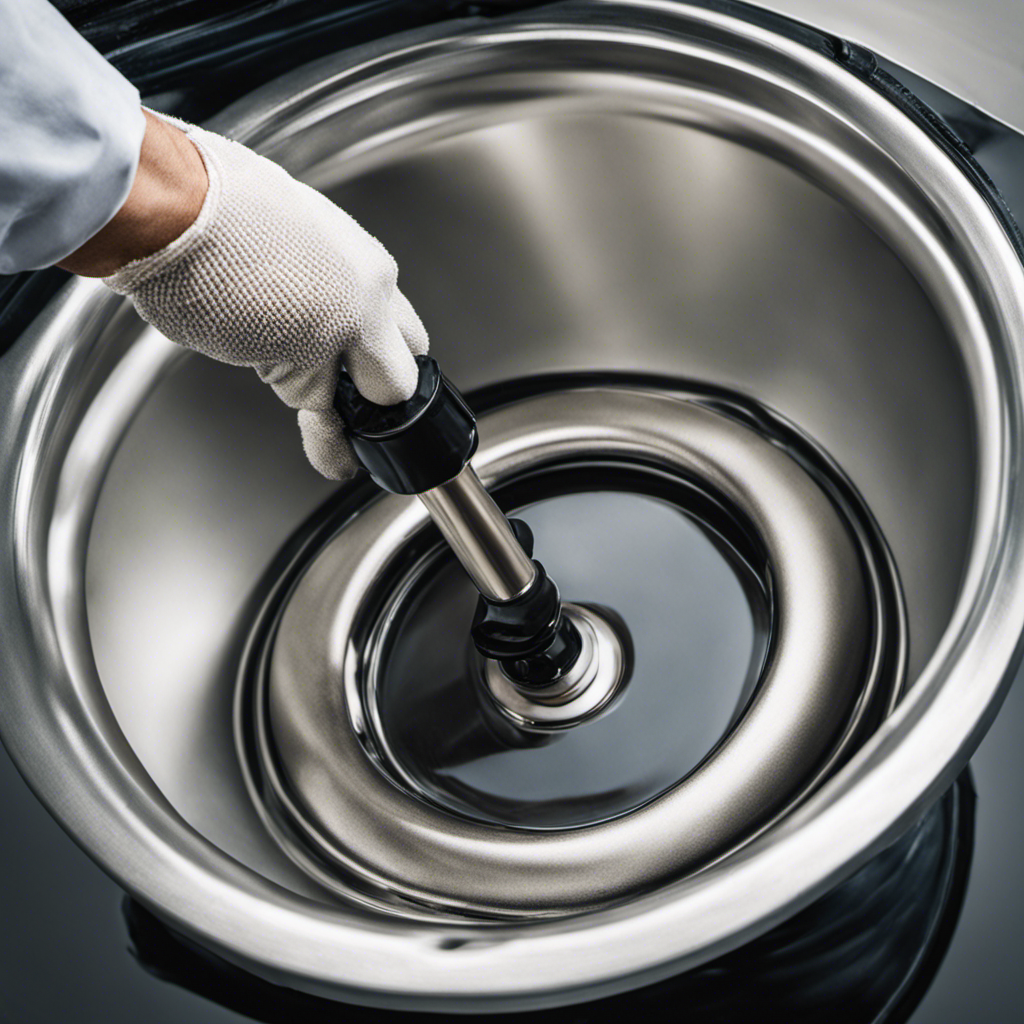
As an experienced RV enthusiast, I’ve been in some pretty messy situations, but nothing compares to a clogged toilet on the road. Picture this: you’re in the middle of nowhere, surrounded by nature’s beauty, and suddenly, your RV toilet decides to throw a tantrum.
Don’t panic! In this article, I’ll guide you through the step-by-step process of unclogging an RV toilet. With the right tools and a little know-how, you’ll be back to enjoying your travels in no time.
Key Takeaways
- Excessive use of toilet paper and flushing non-flushable items are common causes of RV toilet clogs.
- Essential tools for unclogging an RV toilet include a plunger with a flange, gloves, a toilet auger, drain cleaner, and a bucket.
- A step-by-step guide to clearing a partially clogged RV toilet includes identifying common causes, determining severity, using a plunger or auger, and testing for proper drainage.
- Prevent future clogs by disposing of non-biodegradable items properly, using RV-friendly toilet paper, regularly cleaning the toilet and plumbing system, and flushing with plenty of water.
Understanding the Common Causes of RV Toilet Clogs
You need to understand the common causes of RV toilet clogs so you can effectively unclog your toilet.
There are several factors that can contribute to a clogged toilet in your RV. One of the main causes is excessive use of toilet paper. Using too much toilet paper can easily lead to a clog.
Another common cause is flushing items that are not meant to be flushed, such as feminine hygiene products or wipes. These items do not break down easily and can quickly block the pipes.
Additionally, a low water level in the toilet bowl can also cause clogs. It is important to keep an eye out for signs of a clogged toilet, such as slow draining or water backing up into the bowl.
Understanding these causes and recognizing the signs will help you prevent and address RV toilet clogs effectively.
Essential Tools and Supplies for Unclogging an RV Toilet
One of the essential tools for fixing a clogged RV toilet is a plunger. To effectively unclog an RV toilet, it is crucial to understand the mechanisms behind it.
The RV toilet has a trap that prevents odors from entering the living space, and it is important not to damage this trap while unclogging.
When choosing the right plunger, opt for a toilet plunger with a flange, as it is specifically designed for toilets. This type of plunger creates a better seal and provides more suction power. Additionally, make sure the plunger has a long handle for better leverage.
To use the plunger effectively, place it over the toilet drain and apply firm pressure, using an up-and-down motion. This will create suction and dislodge the clog.
Step-by-Step Guide to Clearing a Partially Clogged RV Toilet
When it comes to dealing with a partially clogged RV toilet, it’s important to understand the common causes of clogging, effective methods for unclogging, and steps to prevent future clogs.
First, common causes of clogging can include excessive toilet paper usage, foreign objects being flushed, or a buildup of waste and debris.
To effectively unclog the toilet, you can try using a plunger or a toilet auger depending on the severity of the clog.
Common Clogging Causes
The most common causes of clogging in an RV toilet are excessive toilet paper usage and the disposal of non-biodegradable materials. Understanding these common signs and taking effective preventive measures can help avoid clogs and keep your RV toilet running smoothly.
One common sign of a clogged RV toilet is slow draining or water backup. If you notice this, it’s important to act quickly to prevent further clogging.
To prevent clogs, be mindful of the amount of toilet paper you use. Use only a modest amount and flush frequently to ensure proper disposal. Additionally, avoid flushing non-biodegradable items such as wipes, feminine products, or paper towels, as these can easily cause clogs.
Effective Unclogging Methods
To effectively clear a clog in your RV toilet, you can try using a plunger or a toilet auger. These are the most common and effective methods for DIY toilet unclogging. Here are step-by-step instructions on how to use them.
-
Plunger method:
- Start by wearing rubber gloves for hygiene purposes.
- Place the rubber cup of the plunger over the drain hole in the toilet bowl.
- Push down firmly and then pull up quickly, creating a suction force.
- Repeat this motion several times until the clog is dislodged.
- Flush the toilet to check if the water is draining properly.
-
Toilet auger method:
- Put on gloves and insert the toilet auger into the toilet drain.
- Rotate the handle clockwise while gently pushing it forward.
- Keep pushing and rotating until you feel resistance.
- Once you reach the clog, continue rotating to break it apart.
- Slowly pull the auger out and flush the toilet to test for proper drainage.
These unclogging hacks can save you time and money, allowing you to handle simple toilet clogs on your own. Remember to always exercise caution and consult a professional if the clog persists or worsens.
Preventing Future Clogs
Make sure you dispose of sanitary products, baby wipes, and excessive toilet paper in the trash instead of flushing them to prevent future clogs.
Here are four maintenance tips for avoiding clogging incidents:
-
Use RV-friendly toilet paper: Regular toilet paper may not break down easily and can lead to clogs. Opt for specially formulated RV toilet paper that dissolves quickly.
-
Regularly clean the toilet and plumbing system: Regular cleaning helps prevent build-up and keeps the toilet functioning properly. Use RV-safe cleaning products to avoid damaging the system.
-
Flush with plenty of water: After each use, make sure to flush the toilet with plenty of water to help move waste through the plumbing system and prevent clogs.
-
Be mindful of what you flush: Avoid flushing items such as paper towels, feminine hygiene products, or any other non-biodegradable items. Stick to waste and RV-approved toilet paper.
Effective Methods for Dealing With a Severely Clogged RV Toilet
When dealing with a severely clogged RV toilet, there are a few key options to consider.
First, you can try using a plunger or an auger to physically dislodge the blockage.
If this doesn’t work, there are chemical cleaner options available that can help break down the clog.
However, if the clog persists despite these attempts, it may be necessary to seek professional help to resolve the issue.
Plunger or Auger
Grab a plunger or auger to tackle the clog in your RV toilet. Don’t worry if you don’t have a plunger or auger on hand; there are alternative methods you can try to DIY unclog your toilet. Here are four effective DIY unclogging methods:
-
Hot Water and Dish Soap: Pour a pot of boiling water mixed with dish soap down the toilet. Let it sit for a few minutes, then flush. The hot water and soap will help break down the clog.
-
Baking Soda and Vinegar: Sprinkle baking soda into the toilet bowl, then pour vinegar over it. Let the mixture sit for a few minutes before flushing. The chemical reaction between the baking soda and vinegar will help dissolve the clog.
-
Wire Hanger: Straighten a wire coat hanger and create a small hook at one end. Insert the hooked end into the toilet drain and gently maneuver it to break up the clog.
-
Enzyme-based Drain Cleaner: Use an enzyme-based drain cleaner specifically designed for RV toilets. Follow the instructions on the packaging to effectively dissolve the clog.
Remember to always use caution when attempting to unclog your RV toilet. If these methods don’t work, it may be best to call a professional plumber for assistance.
Chemical Cleaner Options
If you’re looking for an alternative to using a plunger or auger, consider trying one of these chemical cleaner options for your clogged RV toilet.
Chemical cleaners are designed to break down the clog and clear your toilet bowl effectively.
Here’s a step-by-step guide on how to use chemical cleaners as alternative solutions:
-
Choose a chemical cleaner specifically formulated for RV toilets. Read the label carefully for instructions and safety precautions.
-
Put on protective gloves and goggles to ensure your safety.
-
Pour the recommended amount of the chemical cleaner into the toilet bowl.
-
Let the cleaner sit for the specified time, usually around 15-30 minutes. This allows the chemicals to work on breaking down the clog.
-
After the designated time, flush the toilet to see if the clog has been cleared. If not, repeat the process or consider trying a different chemical cleaner.
Remember to always follow the instructions and safety guidelines provided by the manufacturer when using chemical cleaners.
Professional Help Needed?
Sometimes, it’s best to seek the assistance of a professional plumber to resolve stubborn clogs in your recreational vehicle’s bathroom. While there are many DIY methods you can try, some clogs may require professional expertise.
Here are four reasons why professional assistance might be needed:
-
Expertise: Plumbers have the knowledge and experience to quickly identify the cause of the clog and determine the most effective solution.
-
Specialized Tools: Professionals have access to specialized tools and equipment that can effectively remove stubborn clogs without causing damage to your RV’s plumbing system.
-
Time-Saving: Hiring a professional plumber saves you time and effort. They can efficiently unclog your RV toilet, allowing you to get back to enjoying your trip.
-
Avoiding Further Damage: Attempting DIY methods without proper knowledge or tools can potentially worsen the clog or cause damage to your RV’s plumbing system.
While DIY methods can sometimes work, it’s important to recognize when professional assistance is needed to ensure a successful and long-lasting solution.
Preventive Measures to Avoid Future RV Toilet Clogs
To avoid future RV toilet clogs, you’ll want to regularly maintain and clean your toilet system. By following these maintenance tips, you can prevent clogs and ensure smooth operation of your RV toilet.
First, be mindful of what you flush down the toilet. Avoid flushing anything other than toilet paper and waste.
Next, use plenty of water when flushing to help move waste through the system.
Additionally, consider using RV-friendly toilet paper that breaks down easily.
It’s also important to regularly inspect and clean the toilet valve, flapper, and seals to prevent build-up and ensure proper functioning.
Lastly, empty and clean your black water tank regularly to prevent solids from accumulating. By implementing these maintenance measures, you can reduce the risk of future clogs and keep your RV toilet in optimal condition.
Now, let’s move on to troubleshooting and additional tips for unclogging an RV toilet.
Troubleshooting and Additional Tips for Unclogging an RV Toilet
Let’s start by checking if there’s any visible blockage in the toilet bowl or the drain pipe. Sometimes, a simple blockage can be easily removed without the need for additional troubleshooting methods or alternative unclogging techniques.
However, if the blockage is not visible or cannot be easily cleared, here are some additional troubleshooting methods and alternative unclogging techniques you can try:
-
Use a plunger: Plunge the toilet forcefully, making sure to create a tight seal around the drain. This can help dislodge the blockage and allow it to flow through.
-
Try a toilet auger: This tool is specifically designed to reach and remove stubborn clogs in the toilet drain. Insert the auger into the drain and rotate it to break up or pull out the clog.
-
Use a chemical drain cleaner: Follow the instructions on the product carefully, as different cleaners may have different application methods. These cleaners can dissolve the clog and restore proper flow.
-
Use a plumbing snake: Insert the snake into the toilet drain and rotate it to break up or remove the clog. This tool is especially useful for hard-to-reach blockages.
Frequently Asked Questions
How Long Does It Usually Take to Unclog an RV Toilet?
It usually takes me around 30 minutes to unclog an RV toilet. Some common causes of clogs include excessive toilet paper, foreign objects, or a buildup of waste.
Can I Use Regular Household Cleaning Products to Unclog an RV Toilet?
Yes, you can use regular household cleaning products to unclog an RV toilet. However, it is recommended to use specific RV toilet cleaner or alternative methods like using a plunger or a drain snake.
Are There Any Specific Brands of Toilet Plungers That Work Better for Unclogging RV Toilets?
When selecting a plunger for an RV toilet, it’s crucial to choose the best toilet plunger brands. Consider factors such as durability, suction power, and design. A reliable plunger can effectively unclog an RV toilet.
Can I Use a Snake or Auger to Unclog an RV Toilet?
Yes, a toilet snake or auger can be used as alternative methods to unclog an RV toilet. It is important to follow the proper steps and use caution when attempting this method.
What Should I Do if None of the Unclogging Methods Mentioned in the Article Work?
If none of the methods mentioned in the article work, I suggest trying alternative unclogging methods like using a plunger or a chemical drain cleaner. If all else fails, it may be best to seek professional help.
Conclusion
In conclusion, unclogging an RV toilet is a task that requires patience and the right tools. By understanding the common causes of clogs and following a step-by-step guide, you can effectively clear a partially or severely clogged toilet.
Remember to take preventive measures to avoid future clogs and troubleshoot any issues that may arise. With a little effort, you’ll be able to restore your RV toilet to its full functionality and enjoy a stress-free camping experience.
Happy unclogging, and may your toilet flow freely like a majestic waterfall!
Liam’s journey with us started as a consumer. Having faced challenges while setting up his own modern bathroom, he delved deep into research.
Recognizing his knack for simplifying complex information and his authentic writing style, we were thrilled to welcome him aboard. Liam’s articles often merge practicality with style, ensuring readers find the perfect fit for their homes. Liam is an avid hiker off-duty and often jokes about finding the best “natural toilets” Mother Earth has to offer.
FAQ - Advanced Bathroom Queries
Can You Flush the Toilet Paper in Italy

Have you ever wondered if it’s okay to flush toilet paper in Italy? Here’s the lowdown: plumbing practices in Italy may vary from what you’re used to.
We’ve all experienced those moments of uncertainty in unfamiliar bathrooms, right? But fear not, because we’re here to shed some light on this cultural quirk.
In this article, we’ll explore the ins and outs of toilet paper disposal in Italy and offer some handy tips for navigating public restrooms like a pro.
So, let’s dive in!
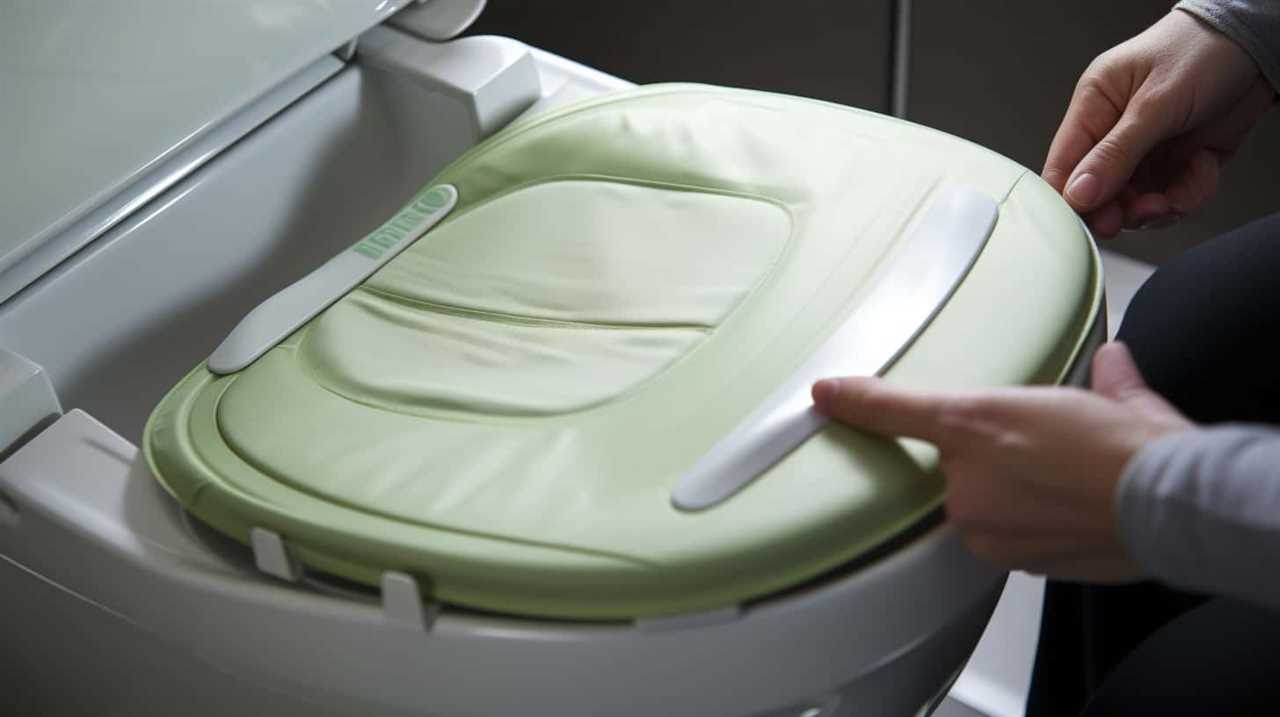
Key Takeaways
- Italian plumbing systems are designed to handle the disposal of toilet paper without any issues.
- In many parts of Italy, the plumbing systems aren’t designed to handle toilet paper, so it is not flushed.
- Italians often dispose of used toilet paper in a waste bin next to the toilet instead of flushing it.
- Proper toilet paper disposal in Italy contributes to the preservation of the country’s historic buildings and protects the delicate plumbing infrastructure.
Plumbing System in Italy
In Italy, the plumbing system allows us to flush toilet paper down the toilet. This convenience isn’t only practical but also has important maintenance and environmental implications.
When it comes to maintenance, Italian plumbing systems are designed to handle the disposal of toilet paper without any issues. The pipes and sewer systems are built to efficiently transport and process waste, including toilet paper, preventing clogs and blockages. This is a testament to the advanced engineering and infrastructure in the country.
From an environmental perspective, allowing the flushing of toilet paper reduces the need for alternative disposal methods such as trash bins or separate waste systems. It also minimizes the risk of contamination and the spread of bacteria.
However, cultural differences in toilet paper disposal exist, which we’ll explore in the next section.

ARTICLE TRANSITION:
Now that we’ve discussed the plumbing system in Italy, let’s delve into the cultural differences in toilet paper disposal.
Cultural Differences in Toilet Paper Disposal
Let’s explore the cultural differences that exist when it comes to disposing of toilet paper in Italy. Toilet paper etiquette in Italy is quite different from what most of us are accustomed to.
- Do Not Flush: In many parts of Italy, the plumbing systems aren’t designed to handle toilet paper. Instead of flushing it down the toilet, Italians often dispose of used toilet paper in a waste bin next to the toilet.
- Bin Placement: It’s important to note that these waste bins are usually lined with plastic bags, which are replaced regularly to maintain cleanliness.
- Odor Control: To minimize any unpleasant smells, it’s common for Italians to use scented garbage bags and air fresheners in the bathroom.
Understanding these cultural differences in toilet paper disposal is crucial to avoid any plumbing mishaps during your visit to Italy.
Now, let’s explore some alternative methods of toilet paper disposal.

Alternative Methods of Toilet Paper Disposal
We can explore some alternative methods of toilet paper disposal in Italy. While flushing toilet paper is not the norm, there are sustainable options available. One popular method is using a bidet, which is a separate water basin used for cleaning oneself after using the toilet. Bidets are commonly found in Italian bathrooms and offer a hygienic and eco-friendly alternative to toilet paper. Another option is to use toilet paper specifically designed for disposal in waste bins, rather than flushing it. These specially-made toilet paper products are biodegradable and can be safely discarded in the bins provided. By utilizing these alternative methods, Italians are able to reduce their environmental impact while maintaining cleanliness. Speaking of cleanliness, let’s now move on to some tips for using public restrooms in Italy.
| Sustainable Options | Bidet Usage |
|---|---|
| Hygienic | Water-based |
| Eco-friendly | Reduces waste |
| Common in Italy | Alternative to toilet paper |
| Biodegradable | Clean and refreshing |
| Reduces environmental impact | Promotes personal hygiene |
Now that we’ve explored alternative methods of toilet paper disposal, let’s dive into some tips for using public restrooms in Italy.
Tips for Using Public Restrooms in Italy
Moving on to using public restrooms in Italy, there are a few tips that can help ensure a pleasant experience.
- Practice good hand hygiene: Always carry hand sanitizer or antibacterial wipes, as not all restrooms may have soap or paper towels available.
- Follow proper toilet etiquette: Italians are serious about keeping restrooms clean. It’s important to remember to not throw toilet paper into the toilet bowl, but instead, dispose of it in the waste bin provided.
- Be prepared for paid restrooms: Many public restrooms in Italy require a small fee for usage. It’s helpful to always carry some loose change to avoid any awkward situations.
Conclusion: Proper Toilet Paper Disposal in Italy
Continuing the conversation from the previous subtopic, we can delve into the proper disposal of toilet paper in Italy. When it comes to cultural implications, it is important to note that Italy has a different approach to toilet paper disposal compared to other countries. In most regions, it is customary to throw used toilet paper into a bin next to the toilet instead of flushing it down the toilet. This practice is rooted in the country’s older plumbing systems, which are not designed to handle large amounts of toilet paper.

This method of disposal may seem unusual to visitors, but it is essential to respect and abide by local customs. It is also worth considering the environmental impact of flushing toilet paper. By disposing of it in a bin, Italy reduces the strain on its sewage system and prevents potential blockages and costly repairs. Additionally, this practice contributes to the preservation of the country’s historic buildings, as it helps protect the delicate plumbing infrastructure.
To help you understand the proper toilet paper disposal in Italy, here is a simple table outlining the key differences compared to other countries:
| Country | Toilet Paper Disposal Method |
|---|---|
| Italy | Throw in a bin |
| United States | Flush down the toilet |
| United Kingdom | Flush down the toilet |
Frequently Asked Questions
Is the Plumbing System in Italy Similar to the Plumbing System in Other Countries?
Cultural differences affect plumbing systems worldwide. When comparing the plumbing system in Italy to others, it’s essential to consider factors like toilet paper disposal. Understanding these variations helps us navigate plumbing practices while traveling.
What Are Some Cultural Differences in Toilet Paper Disposal in Italy Compared to Other Countries?
Cultural practices vary when it comes to toilet paper disposal in Italy compared to other countries. It’s important to note that some places don’t allow flushing due to the plumbing system and environmental impact.
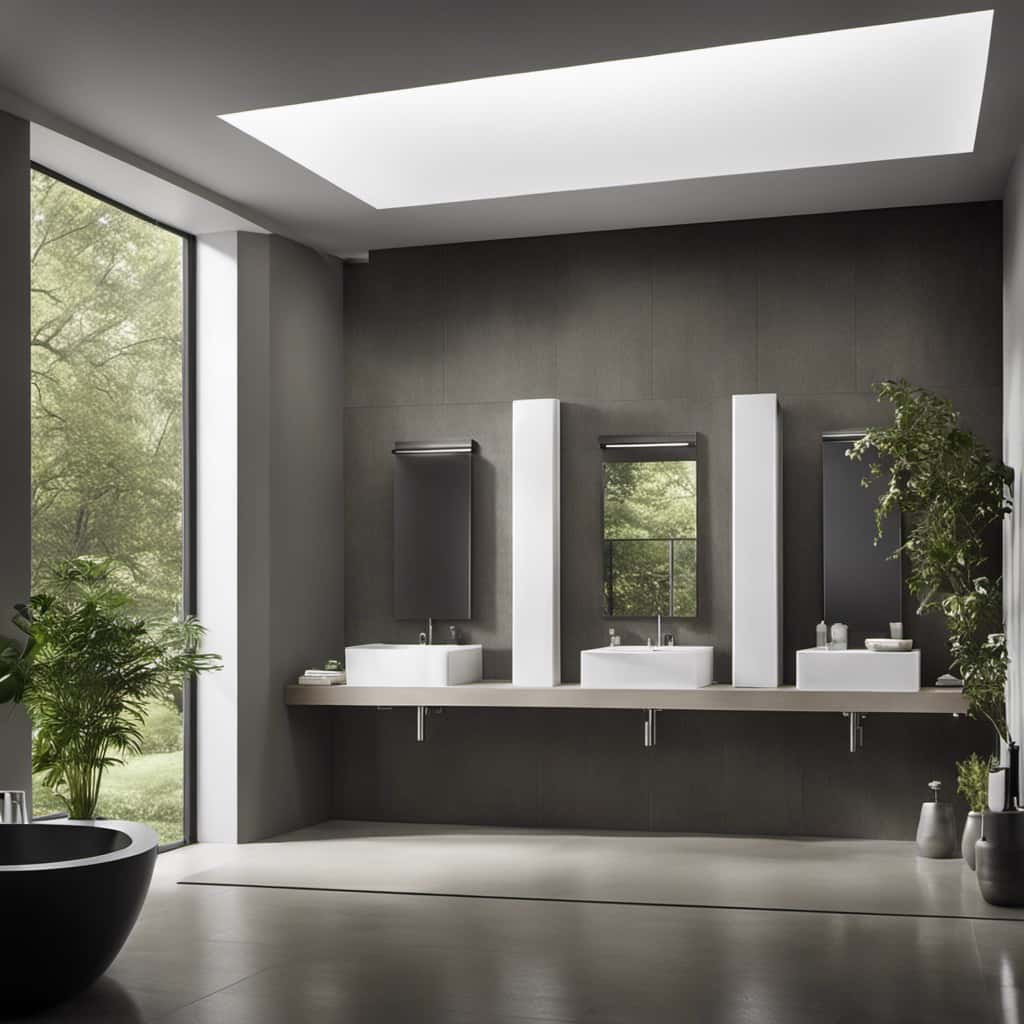
Are There Any Alternative Methods of Toilet Paper Disposal Commonly Used in Italy?
There are alternative methods of toilet paper disposal commonly used in Italy. Some eco-friendly options include bidets, which provide a more thorough clean, and wet wipes, which can be tossed in a special bin.
Do Public Restrooms in Italy Have Any Specific Rules or Norms That Visitors Should Be Aware Of?
When using public restrooms in Italy, it’s important to be mindful of toilet paper etiquette and maintain cleanliness. Familiarizing yourself with the specific rules and norms will ensure a smooth experience.
Why Is Proper Toilet Paper Disposal Important in Italy?
Proper toilet paper disposal is important in Italy due to the environmental impact of improper disposal. It helps maintain hygiene and prevents clogging of the sewage system. It’s crucial to follow local guidelines and dispose of toilet paper in the appropriate bins provided.
Conclusion
In conclusion, when it comes to toilet paper disposal in Italy, remember to always follow their cultural norms and plumbing system. As the saying goes, ‘When in Rome, do as the Romans do.’
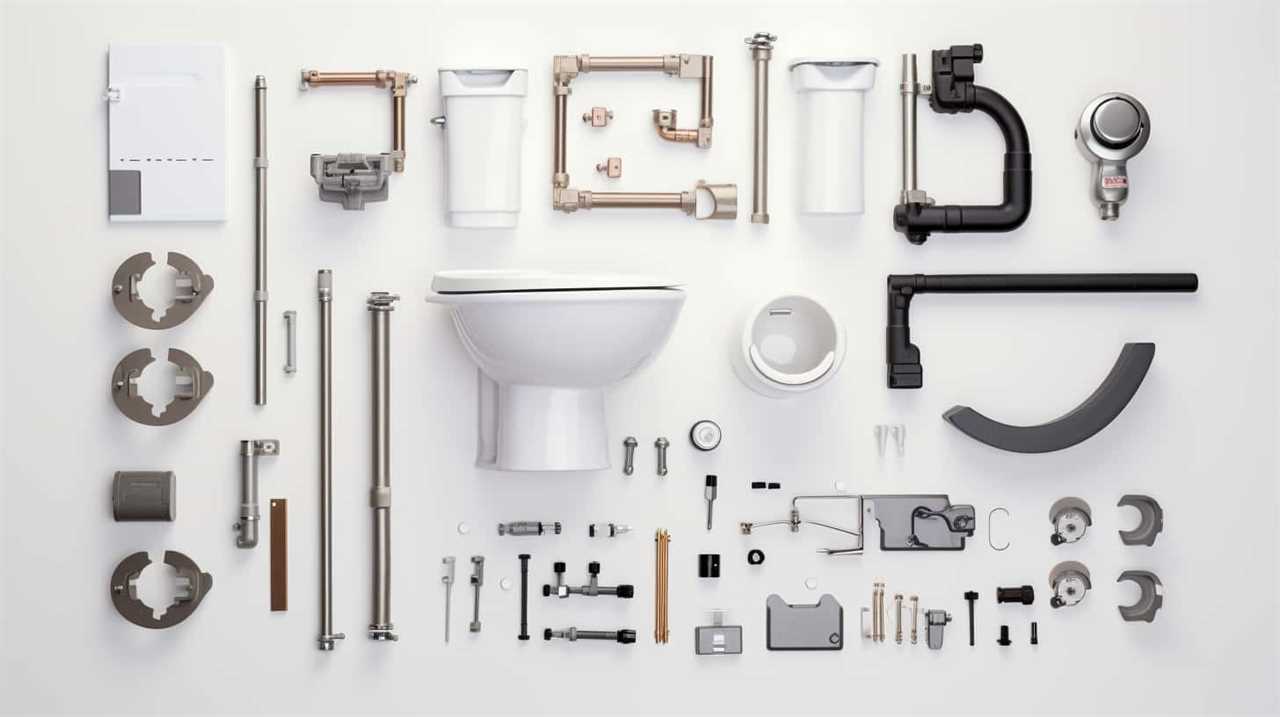
Be mindful of the alternative methods available and always use public restrooms responsibly. By respecting their customs, we can ensure a smooth and pleasant experience while visiting Italy.
So next time you’re in the beautiful country, remember to be considerate and flush the toilet paper in the designated manner.
With an impeccable eye for detail and a passion for bathroom-related, Ava leads our editorial team gracefully and precisely.
Under her guidance, Best Modern Toilet has flourished as the go-to resource for modern bathroom enthusiasts. In her free time, you might find Ava exploring antique shops and looking for vintage bathroom fixtures to add to her collection.
FAQ - Advanced Bathroom Queries
Can Wipes Go in the Toilet

Were you aware that flushing wipes down the toilet is the cause of over 90% of clogged pipes in the United States?
We, as a collective, need to understand the impact this seemingly harmless action has on our plumbing systems and the environment.
In this article, we will delve into the consequences of flushing wipes, explore alternative methods, and provide you with the proper disposal techniques.
Let’s educate ourselves and make informed decisions about the safety of flushing wipes.
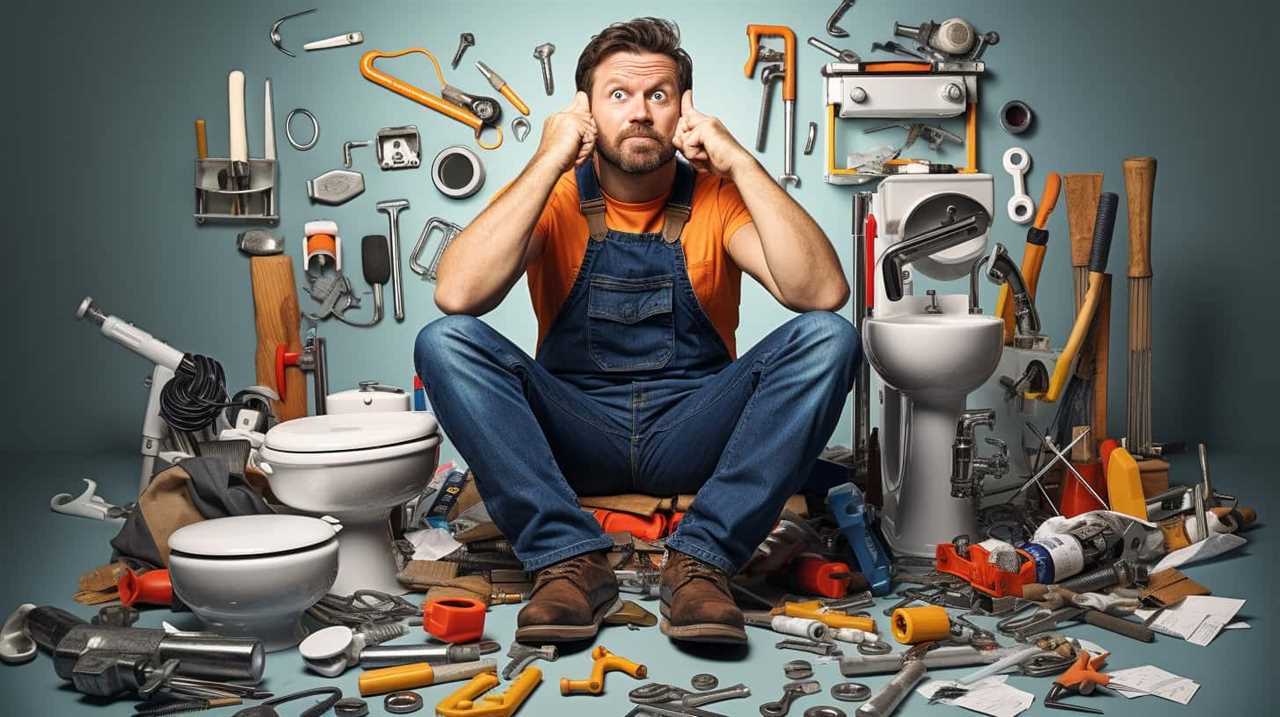
Key Takeaways
- Flushing wipes can cause clogged pipes, leading to expensive plumbing repairs.
- Flushing wipes contributes to marine pollution and harm to marine life and ecosystems.
- Biodegradable and reusable wipes are eco-friendly alternatives to flushing wipes.
- Proper disposal of wipes in the trash can help prevent blockages in the sewage system and protect the environment.
The Impact on Plumbing Systems
In our experience, flushing wipes down the toilet can have a detrimental impact on plumbing systems. When wipes are flushed, they can accumulate and create blockages in the pipes. This can lead to plumbing repairs that are time-consuming and costly.
The fibers in wipes don’t break down as easily as toilet paper, causing them to clump together and form clogs. These clogs can restrict the flow of water, leading to backups and potential flooding. Additionally, the presence of wipes in the pipes can create a breeding ground for bacteria, further exacerbating the problem.
It’s important to understand that the convenience of flushing wipes comes at the expense of potential plumbing issues. Transitioning to the subsequent section, the environmental consequences of flushing wipes will also be explored.
Environmental Consequences of Flushing Wipes
Continuing our exploration of the impact of flushing wipes on plumbing systems, we now turn our attention to the environmental consequences of this practice. Flushing wipes can have severe implications for our marine ecosystems and sewage treatment facilities.

Here are four key reasons why flushing wipes can be detrimental to the environment:
- Marine pollution: Wipes that are flushed down the toilet often end up in our oceans and waterways, contributing to marine pollution. These wipes can harm marine life, such as turtles and seabirds, when they mistake them for food or become entangled in them.
- Clogging sewage treatment facilities: Wipes don’t break down like toilet paper. Instead, they accumulate in sewage systems, leading to blockages and costly repairs for sewage treatment facilities. This can also result in untreated sewage overflow into our rivers and oceans.
- Increased energy and chemical usage: Dealing with wipes in sewage treatment plants requires additional energy and chemical usage, as these facilities need to work harder to break down and remove them. This increased resource consumption can have a negative impact on the environment.
- Microplastic pollution: Wipes often contain synthetic fibers that don’t biodegrade. When they enter water bodies, they break down into microplastics, which are harmful to aquatic life. These microplastics can be ingested by marine organisms, potentially entering the food chain and causing further harm.
It is crucial to avoid flushing wipes down the toilet to protect our marine ecosystems and sewage treatment facilities. Proper disposal in the trash can help mitigate these environmental consequences.
Alternatives to Flushing Wipes
Now, let’s delve into some alternatives to flushing wipes.
When it comes to biodegradable options, there are wipes available on the market that are made from materials that can break down naturally over time. These wipes are designed to be safe for the environment and can be disposed of in a compost bin or in the trash.
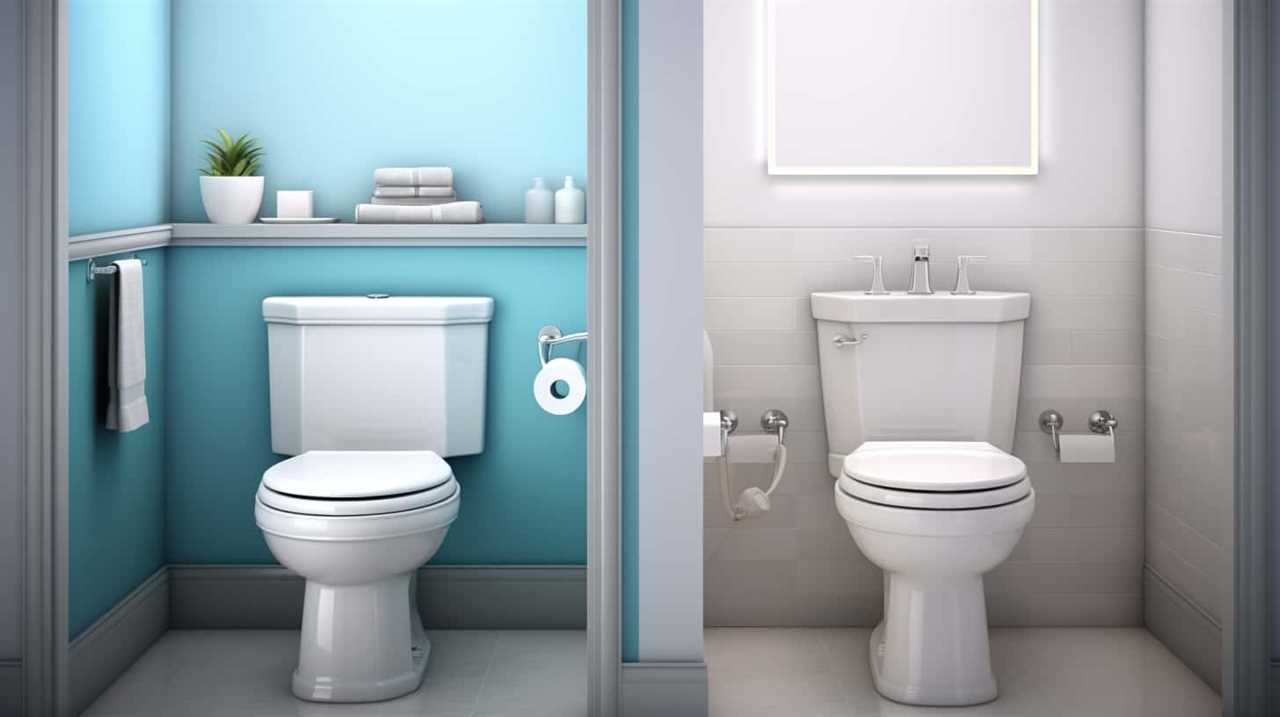
Another alternative is to create your own DIY reusable wipes. By using soft, washable materials such as cotton or bamboo fabric, you can make your own wipes that can be used multiple times before being washed. This not only reduces waste but also saves money in the long run.
Remember to wash these wipes thoroughly after each use to maintain hygiene.
Proper Disposal Methods for Wipes
To properly dispose of wipes, we should consider alternative methods that are safe for the environment and easy to implement. Here are four options to consider:
- Trash Bin: The simplest and most common method is to dispose of wipes in a trash bin. This ensures that they don’t end up in the sewage system and cause blockages.
- Composting: If you’re using biodegradable wipes, you can compost them along with other organic waste. Make sure to check the packaging for information on their biodegradability.
- Specialized Disposal Programs: Some municipalities offer specialized programs for disposing of wipes. These programs collect and dispose of wipes in an environmentally friendly manner.
- Flushable Wipes: If you choose to use flushable wipes, make sure they’re labeled as such and follow the manufacturer’s instructions. However, keep in mind that even flushable wipes can cause issues in the sewage system.
Considering the importance of hygiene practices during COVID-19, it’s crucial to dispose of wipes properly to protect the environment and prevent clogs in the sewage system.
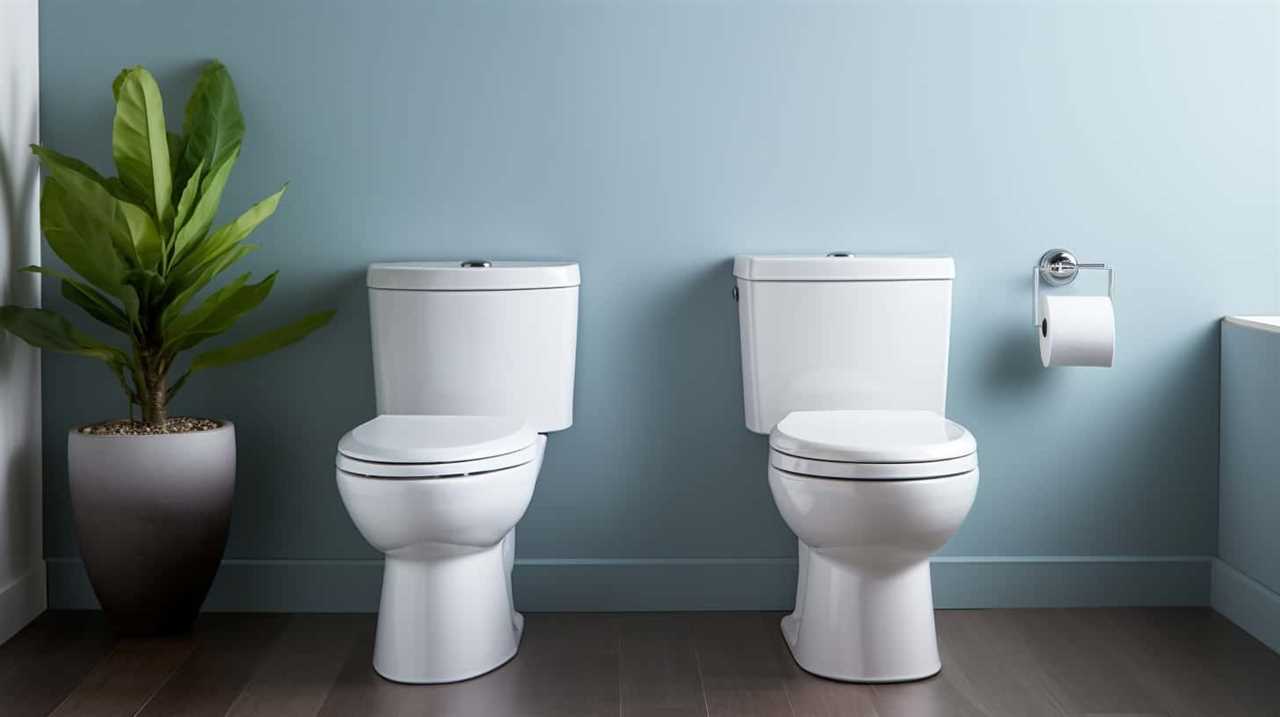
However, is it really safe to flush wipes? Let’s find out in the next section.
Conclusion: Is It Safe to Flush Wipes?
After considering the various disposal methods for wipes, it’s important to assess the safety of flushing them down the toilet. Although convenient, flushing wipes carries certain risks that shouldn’t be overlooked.
One of the main concerns is the potential damage to septic tanks. Unlike toilet paper, wipes don’t break down easily. Instead, they can accumulate in the septic tank and clog the system. This can lead to costly repairs and even complete system failure.
Additionally, wipes may also contribute to sewer backups and overflow in municipal sewer systems, causing environmental contamination and health hazards.
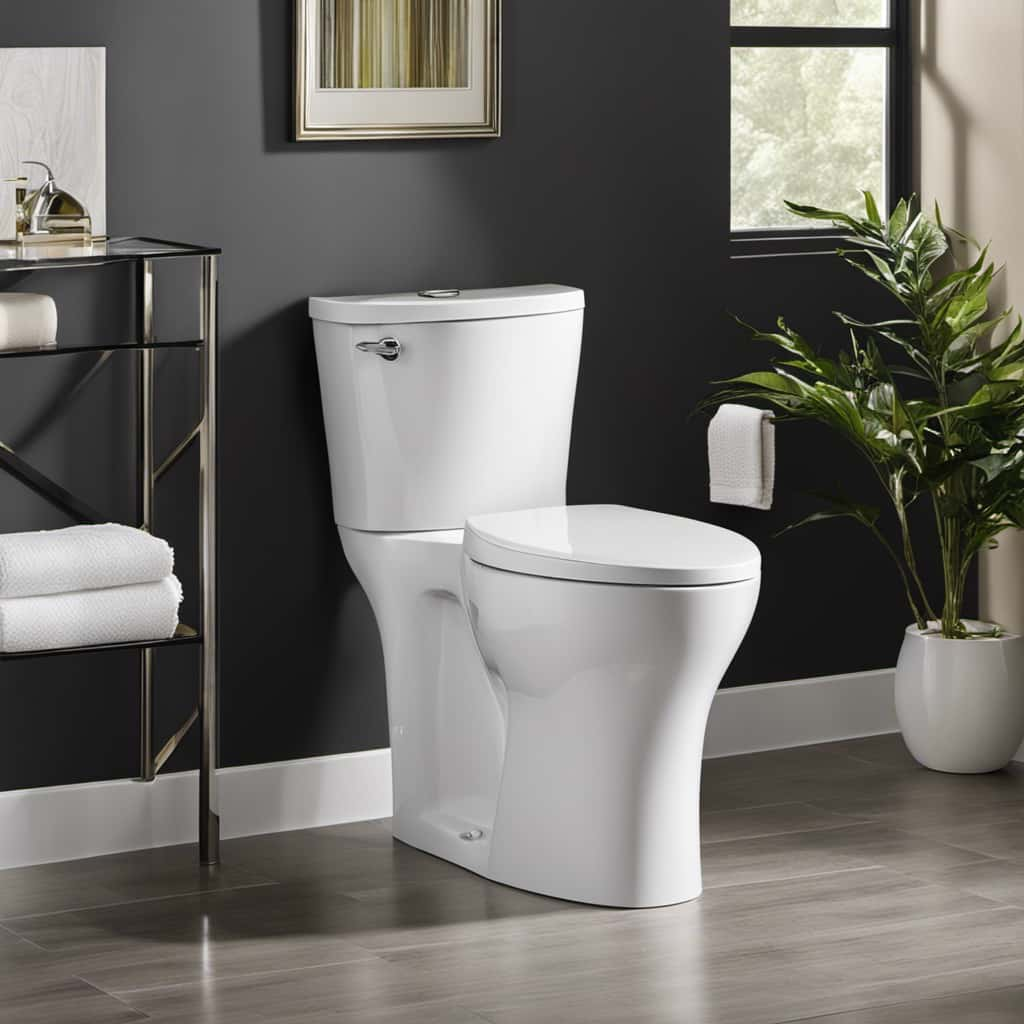
Therefore, it’s generally recommended to avoid flushing wipes and instead dispose of them in the trash to minimize the risks involved and prevent potential septic tank implications.
Frequently Asked Questions
How Do Wipes Affect the Quality of Water in Rivers and Oceans?
The impact of wipes on marine life is significant. Proper disposal methods are crucial to protect the quality of water in rivers and oceans. We must understand the consequences of not disposing of wipes correctly to ensure the health of our ecosystems.
Are All Types of Wipes Equally Harmful to the Environment When Flushed?
Different types of wipes have varying environmental impacts when flushed. Biodegradable wipes are more effective in reducing harm. Flushing wipes, regardless of type, can contribute to clogged pipes and sewage system issues.
Can Flushing Wipes Lead to Blockages in Household Plumbing Systems?
Flushing wipes can wreak havoc on our plumbing. We learned the hard way when our toilet backed up, causing a messy flood. Not only do wipes clog sewage systems, but they also pose potential health hazards.
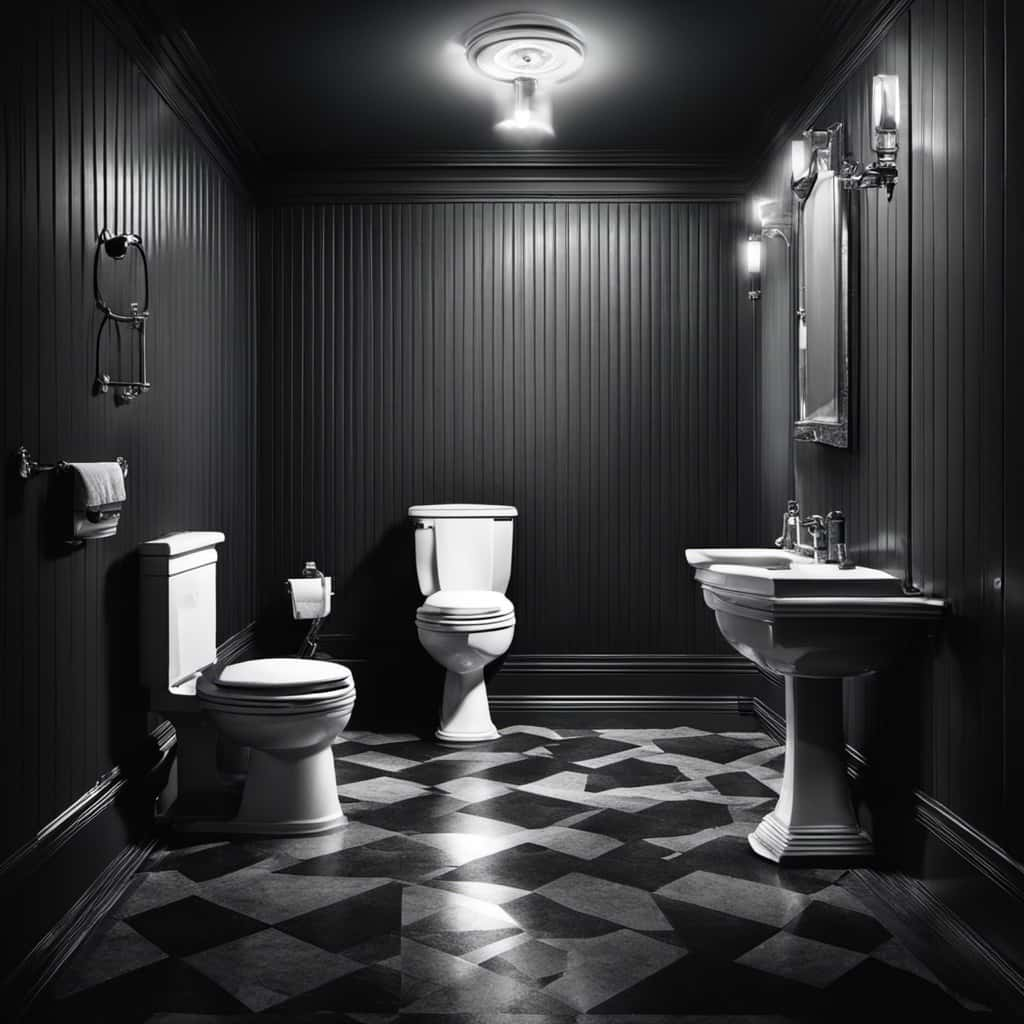
What Are Some Environmentally-Friendly Alternatives to Flushing Wipes?
Eco-friendly options and biodegradable alternatives are available as substitutes for flushing wipes. These alternatives are environmentally conscious and can help prevent blockages in household plumbing systems while still providing the desired functionality.
Are There Any Specific Guidelines for Disposing of Wipes in Landfills?
Guidelines for disposing of wipes in landfills are essential. We must follow proper procedures to avoid environmental harm. Disposing of wipes incorrectly can lead to clogged pipes, sewage backups, and negative impacts on our water systems.
Conclusion
In conclusion, it’s crucial to remember that wipes should never be flushed down the toilet. Despite their convenience, flushing wipes can lead to severe plumbing issues and have detrimental environmental consequences.
It’s essential to explore alternative disposal methods, such as throwing them in the trash or using biodegradable options.

Let’s be mindful of our actions and protect our plumbing systems and the environment for future generations.
With an impeccable eye for detail and a passion for bathroom-related, Ava leads our editorial team gracefully and precisely.
Under her guidance, Best Modern Toilet has flourished as the go-to resource for modern bathroom enthusiasts. In her free time, you might find Ava exploring antique shops and looking for vintage bathroom fixtures to add to her collection.
FAQ - Advanced Bathroom Queries
What Liquids Can Be Flushed Down the Toilet

Here’s what we’re aware of: not all liquids are safe to be flushed down the toilet. But don’t worry, we have the information on what can be safely flushed.
In this article, we’ll break it down for you, using our technical know-how and expertise. From water and urine to toilet paper and liquid waste from cleaning and personal care products, we’ll guide you through the dos and don’ts of flushing liquids.
Get ready to master the art of proper toilet liquid disposal!
Key Takeaways
- Water, urine, and toilet paper are the only liquids that can be safely flushed down the toilet.
- Flushing harmful liquids down the toilet can lead to water pollution, contamination of water sources, harm to aquatic life, and sewer system blockages.
- Liquids such as cooking oil and grease, medications and drugs, paint and solvents, and cleaning chemicals should never be flushed down the toilet.
- Proper disposal methods for liquids include utilizing recycling centers, contacting waste management authorities for guidance, participating in community collection events, and using sealed containers or absorbent materials before disposal.
Water
We can flush large quantities of water down the toilet without causing any harm to the plumbing system. Toilet water, which is essentially clean water, poses no threat to the pipes or the overall hygiene of the toilet. This is because the plumbing system is designed to handle the volume and flow of water during the flushing process.
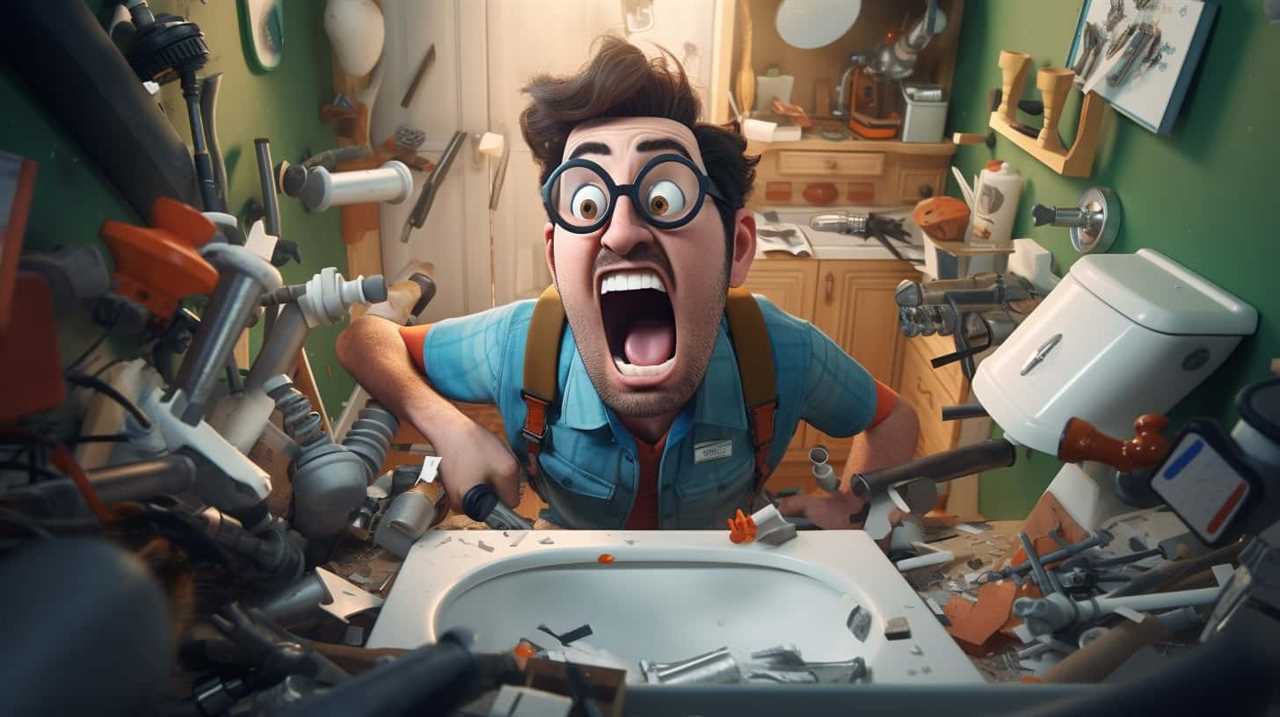
Water is an essential element in maintaining toilet hygiene, as it helps in effectively rinsing away waste and preventing any unpleasant odors. Additionally, the force of the water during flushing aids in keeping the toilet bowl clean and free from any residue.
Therefore, when it comes to toilet hygiene, water is a safe and necessary liquid that can be flushed down the toilet without any concerns.
Urine
To maintain proper toilet hygiene, we can safely flush urine down the toilet. Urine is a waste product produced by the kidneys, consisting mainly of water and dissolved metabolic waste. It’s generally sterile and poses no significant risk to the environment or public health when flushed down the toilet. In fact, flushing urine helps to prevent odors and maintain a clean and hygienic toilet environment.
However, it’s important to note that if someone has a urinary tract infection (UTI), it’s advisable to seek medical attention and follow the prescribed treatment. UTIs can be caused by bacteria and flushing urine infected with bacteria may contribute to the spread of infection.
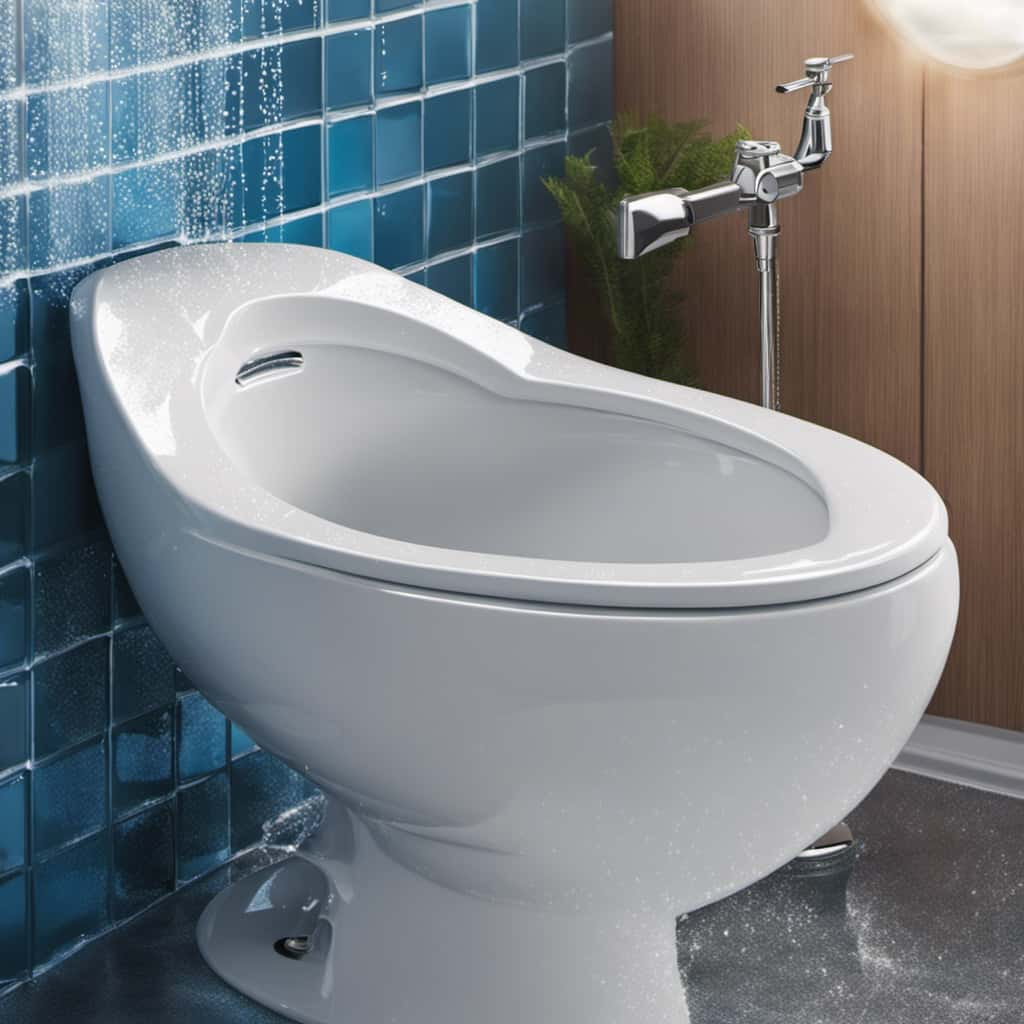
Now, let’s move on to the next essential topic of discussion: toilet paper.
Toilet Paper
Moving on from the previous subtopic of urine, let’s now discuss toilet paper and its role in maintaining proper toilet hygiene. Toilet paper is an essential item in every bathroom, and choosing the right brand is crucial. Here are four important factors to consider when selecting toilet paper:
- Softness: Look for brands that offer a soft and gentle texture to avoid any discomfort during use.
- Strength: Opt for toilet paper that’s strong and durable to prevent tearing or breakage.
- Absorbency: Consider brands that offer excellent absorbency for efficient cleaning and reduced usage.
- Eco-Friendliness: Explore toilet paper alternatives made from recycled materials or bamboo, which are more sustainable options.
Liquid Waste From Cleaning Products
After considering the factors for selecting the right toilet paper, let’s now turn our attention to the proper disposal of liquid waste from cleaning products. When it comes to liquid waste from cleaning products, it is important to be mindful of the impact on the environment. Many conventional cleaning products contain harmful chemicals that can pollute water systems and harm aquatic life. To minimize the negative effects, it is essential to explore eco-friendly alternatives and adopt proper disposal methods. Here is a table highlighting some eco-friendly alternatives and proper disposal methods for liquid waste from cleaning products:
| Eco-friendly Alternatives | Proper Disposal Methods |
|---|---|
| Use natural cleaning products made from plant-based ingredients | Dispose of liquid waste at designated collection points |
| Make your own cleaning solutions using vinegar, baking soda, and lemon juice | Avoid pouring cleaning product waste down the drain |
| Look for cleaning products with eco-label certifications | Follow local regulations for hazardous waste disposal |
| Use microfiber cloths and reusable mop pads instead of disposable wipes | Recycle empty cleaning product containers |
Liquid Waste From Personal Care Products
When it comes to liquid waste from personal care products, we must consider the proper disposal methods to minimize environmental impact. Here are four important points to keep in mind:
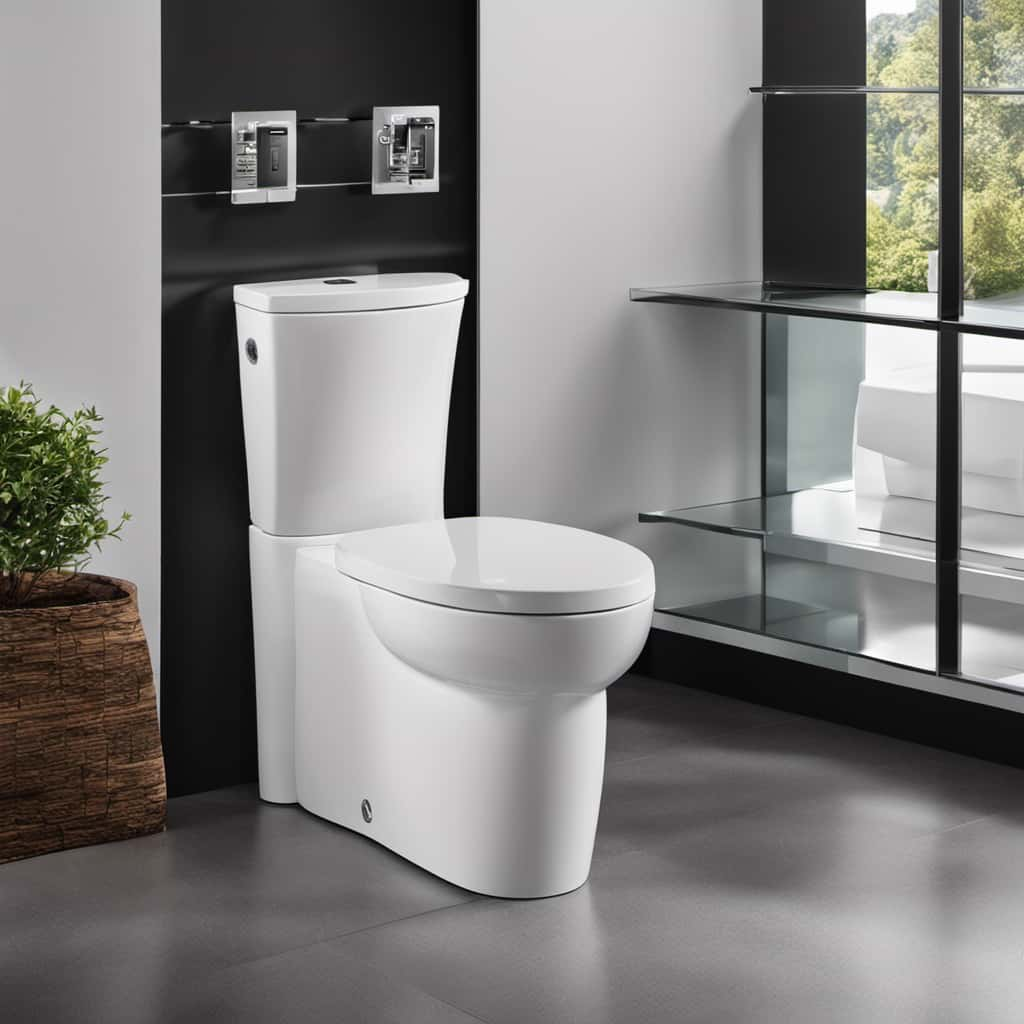
- Hazardous chemicals: Many personal care products contain hazardous chemicals such as parabens, phthalates, and triclosan. These substances can be harmful to aquatic life and may disrupt ecosystems if they enter water bodies.
- Environmental impact: Improper disposal of personal care product waste can result in contamination of water sources, affecting both human health and wildlife. It’s crucial to dispose of these liquids responsibly to minimize their impact on the environment.
- Proper disposal methods: Check local regulations for guidance on disposing of personal care product waste. In many cases, it’s best to minimize waste by using products sparingly and opting for environmentally friendly alternatives. When disposing of liquid waste, consider recycling options or take it to a designated hazardous waste collection facility.
- Consumer responsibility: As consumers, we’ve a role to play in minimizing the environmental impact of personal care products. Choosing products with eco-friendly formulations and packaging, as well as properly disposing of any liquid waste, can help protect the environment for future generations.
Frequently Asked Questions
Can I Flush Coffee Down the Toilet?
We can’t flush coffee down the toilet. It’s best to dispose of coffee grounds in alternative methods, like composting or throwing them in the trash. Flushing coffee can clog pipes and cause damage.
Is It Safe to Flush Expired Medication Down the Toilet?
Flushing expired medication down the toilet is not safe. It can have detrimental environmental impacts. Remember, "An ounce of prevention is worth a pound of cure." Properly dispose of medication through take-back programs or at designated collection sites.
Can I Dispose of Bleach by Flushing It Down the Toilet?
Flushing bleach down the toilet is not a safe way to dispose of it. The environmental impact of flushing bleach includes potential contamination of water sources and harm to aquatic life.
Is It Okay to Flush Cooking Oil or Grease Down the Toilet?
Flushing cooking oil or grease down the toilet is a big no-no. It can clog the pipes and cause serious plumbing issues. Proper grease disposal involves cooling, solidifying, and disposing of it in the trash.

Can I Flush Pet Waste, Such as Cat Litter, Down the Toilet?
When considering toilet safety precautions, it’s important to note that flushing cat litter down the toilet is not recommended. Cat litter can cause clogs and damage to plumbing systems. Dispose of it properly in the trash instead.
Conclusion
In conclusion, it’s important to only flush water, urine, toilet paper, and liquid waste from cleaning and personal care products down the toilet. Flushing other liquids can cause clogs and damage to the plumbing system.
Did you know that approximately 75% of plumbing issues are caused by improper flushing? Imagine the frustration of dealing with a clogged toilet and the costly repairs that can follow.
Let’s be mindful of what we flush to avoid unnecessary plumbing problems.
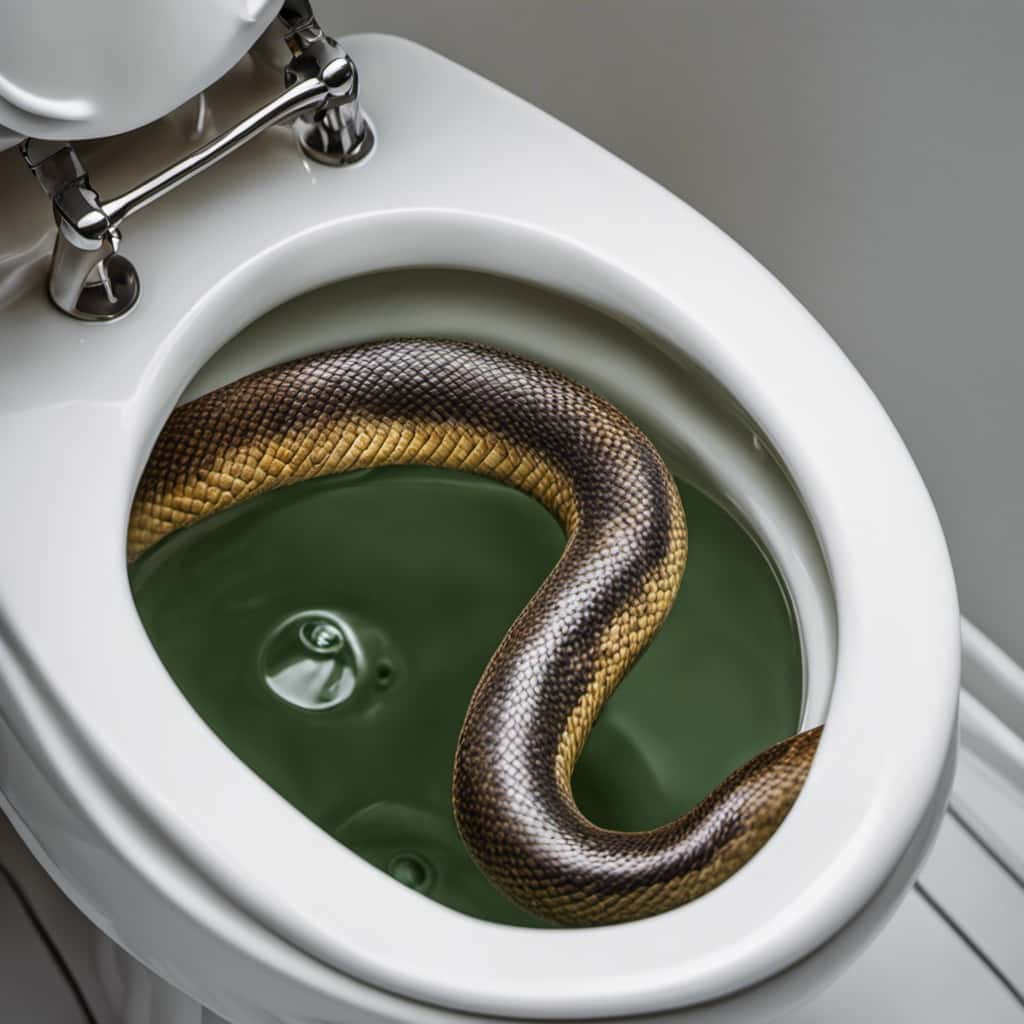
With an impeccable eye for detail and a passion for bathroom-related, Ava leads our editorial team gracefully and precisely.
Under her guidance, Best Modern Toilet has flourished as the go-to resource for modern bathroom enthusiasts. In her free time, you might find Ava exploring antique shops and looking for vintage bathroom fixtures to add to her collection.
-

 Guides3 months ago
Guides3 months agoHow Smart Toilets Can Help Detect Early Signs of Health Issues
-

 Guides3 months ago
Guides3 months agoThe Future of Public Restrooms: Smart Toilets in Airports, Malls, and Stadiums
-

 Guides2 months ago
Guides2 months agoThe Future of Bathroom Cleaning: How Smart Toilets Are Making Chores Obsolete
-

 Guides2 months ago
Guides2 months agoThe Rise of Smart Toilet Apps: Tracking Health and Habits on Your Smartphone
-

 Guides3 months ago
Guides3 months agoSmart Toilet Regulations and Standards: Navigating the Legal Landscape
-

 Guides2 months ago
Guides2 months agoSmart Toilets in Healthcare: Improving Patient Care and Monitoring
-

 Guides2 months ago
Guides2 months agoComposting Smart Toilets: High-Tech Solutions for Eco-Conscious Homeowners
-

 Guides3 months ago
Guides3 months agoThe Impact of Smart Toilets on Real Estate Value and Home Sales










